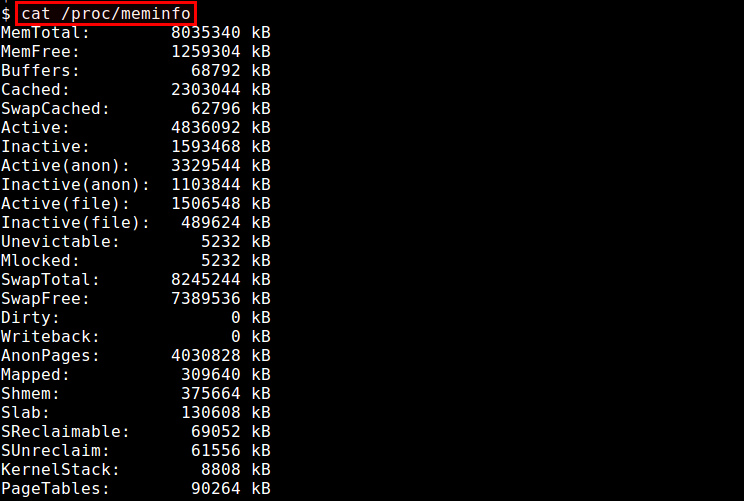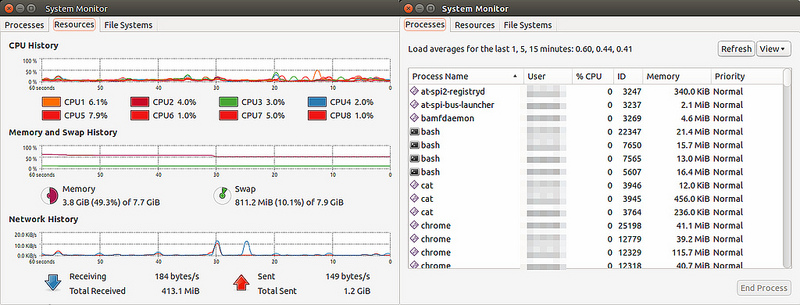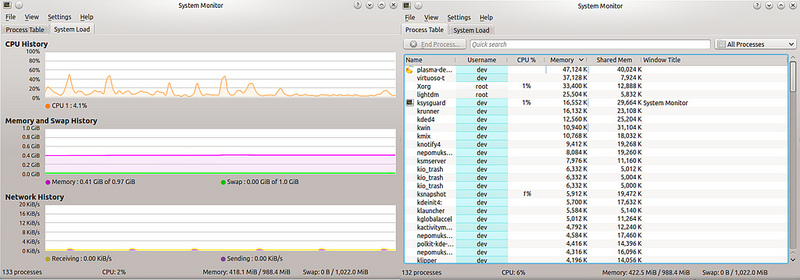
For Linux system administrators, memory management has always been a complex and critical issue. During use, we often need to check memory usage and solve the problem of system crash caused by excessive memory consumption. This article will introduce how to check Linux memory usage and find potential problems, while also providing some common memory management tips and strategies.
When it comes to Linux system performance optimization, physical memory is the most important factor. Naturally, Linux provides a wealth of options for monitoring the usage of precious memory resources. Different tools differ in terms of monitoring granularity (e.g., system-wide, per-process, per-user), interface mode (e.g., graphical user interface, command line, ncurses), or operating mode (interactive mode, batch mode). not exactly.
The following is an alternative, but not comprehensive, list of graphical or command line tools for checking used and available memory on Linux platforms.
1./proc/meminfo
One of the easiest ways is to check memory usage through "/proc/meminfo". This dynamically updated virtual file is actually the source of information for memory-related tools such as free, top, and ps. From the amount of free/idle physical memory to the amount waiting to be written to cache or the amount written back to disk, "/proc/meminfo" has it all. Memory information for a specific process can also be obtained through "/proc/statm" and "/proc/status".
1.$ cat /proc/meminfo

2. atop
The atop command is an interactive system and process monitoring tool based on ncurses for terminal environments. It displays a dynamically updated summary of system resources (CPU, memory, network, input/output, cores) and uses eye-catching colors to highlight high-load parts of the system with warning messages. It also provides a top-like view of thread (or user) resource usage, so system administrators can find which processes or users are causing the system load. The memory statistics report includes total/idle memory, cached/buffered memory and committed virtual memory.
1.$ sudo atop

3. free
The free command is a quick and easy way to get an overview of memory usage. This information is obtained from "/proc/meminfo". It provides a snapshot showing total/free physical memory and system swap area, as well as used/free kernel buffers.
1.$ free -h

4. GNOME System Monitor
GNOME System Monitor is a graphical interface application that displays recent historical information on system resource usage including CPU, memory, swap area and network. It also provides a process view with CPU and memory usage.
1.$ gnome-system-monitor

5. htop
The htop command is an interactive process view based on ncurses, which displays the memory usage of each process in real time. It reports the resident memory size (RSS) of all running processes, the total size of programs in memory, library size, shared page size, and dirty page size. You can scroll the process list horizontally or vertically to view it.
1.$ htop

6. KDE System Monitor
Just like the GNOME desktop has GNOME System Monitor, the KDE desktop also has its own counterpart application: KDE System Monitor. The functionality of this tool is very similar to the GNOME version, that is, it also displays a real-time history of system resource usage and CPU/memory consumption with each process.
1.$ ksysguard

In short, Linux memory management is an area that requires continuous learning and exploration. We hope that through the introduction and analysis of this article, readers can better understand the working principle of memory under Linux systems, and at the same time, they can better deal with various memory problems that may be encountered. If you have any questions or doubts about Linux memory management, please leave a message in the comment area to discuss with us.
The above is the detailed content of How to check Linux memory usage. For more information, please follow other related articles on the PHP Chinese website!




